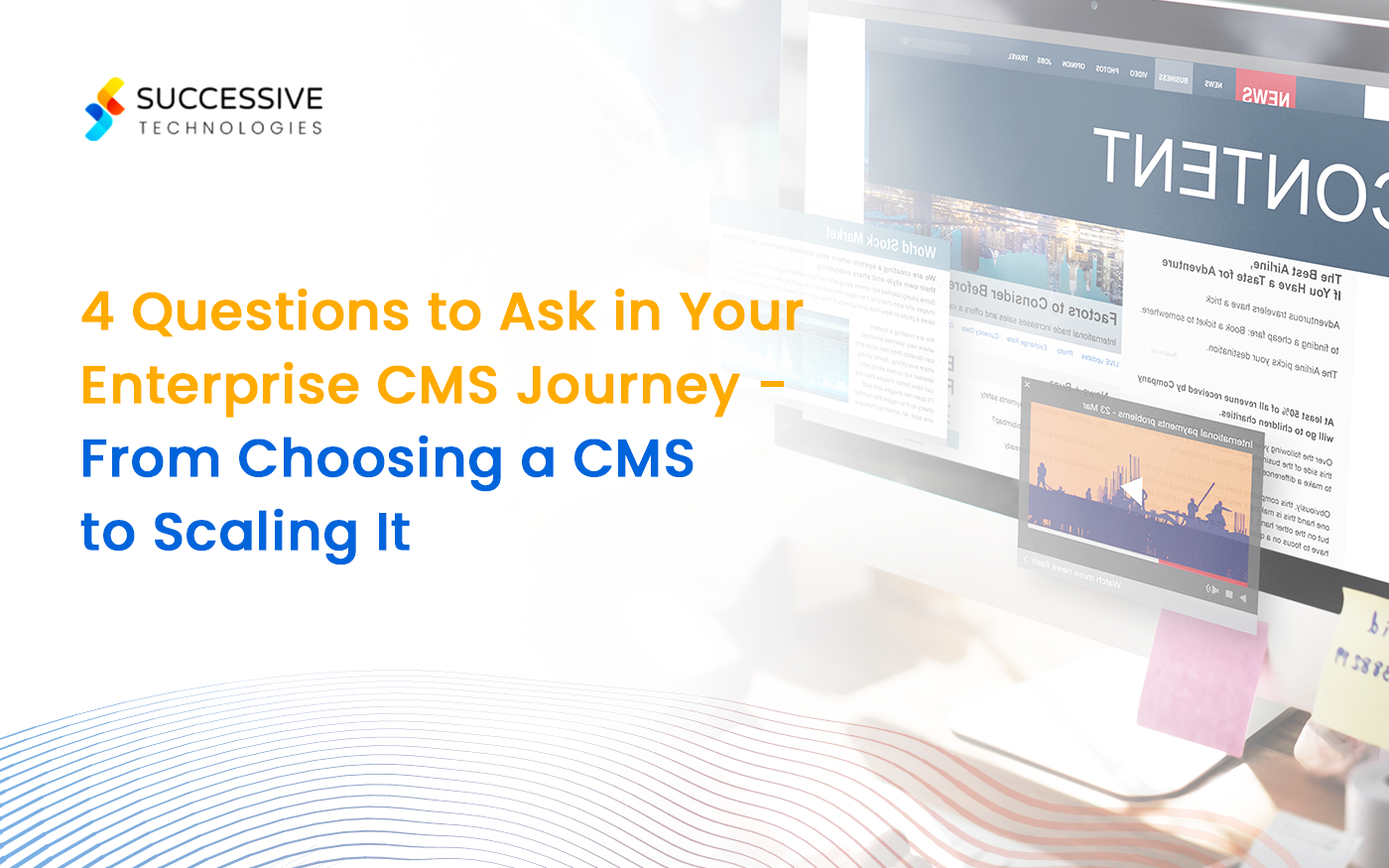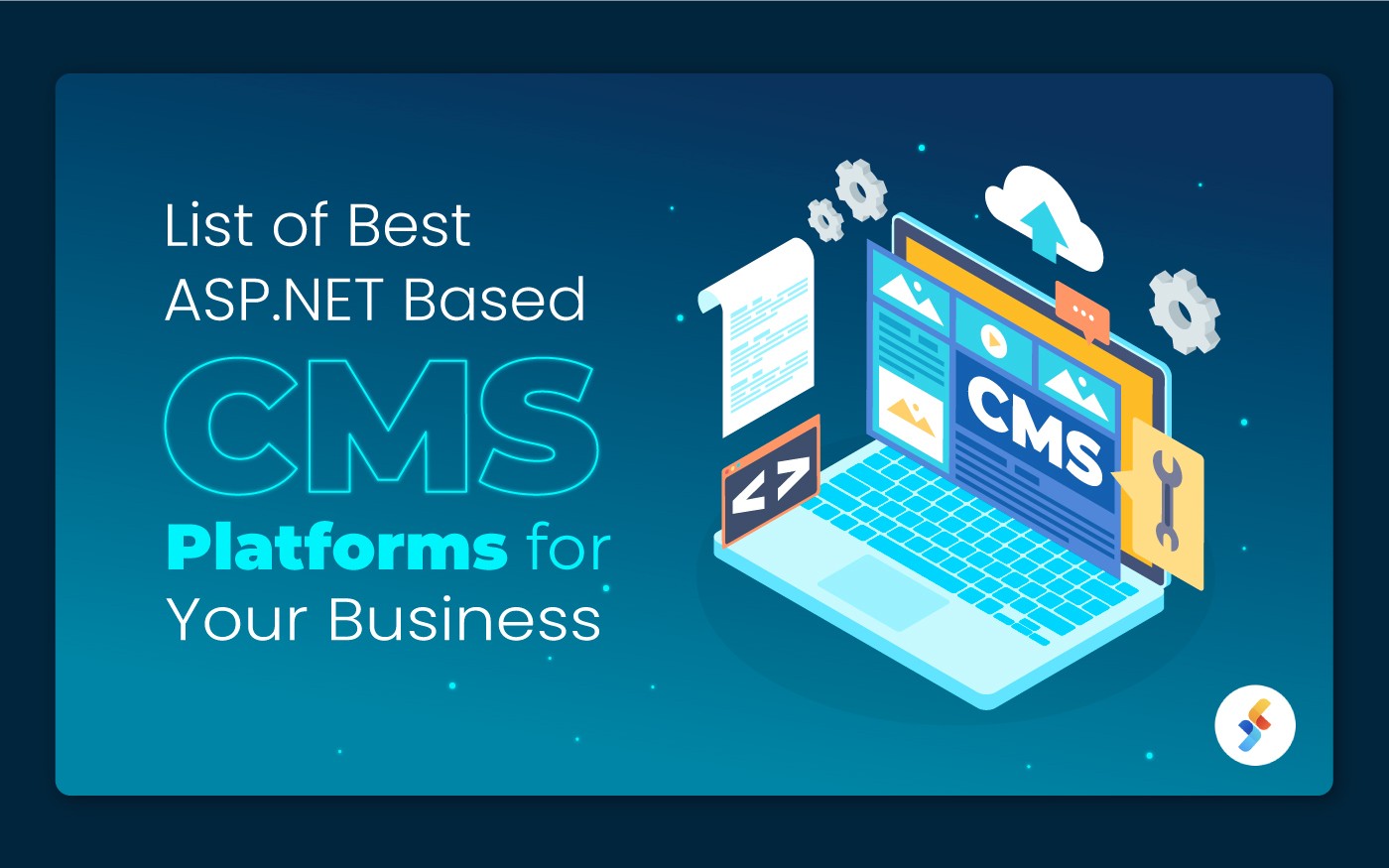Content management systems have always played a significant role in optimizing the digital operations of a business. But as we proceeded further in the digital world, traditional CMS became incompatible with fulfilling the needs of a modern customer and also created data siloes that negatively impacted team productivity. This birthed the concept of headless CMS, a platform that rules out each of these problem statements and offers a flexible space to create, manage, and deliver content with you being in full control.
Moreover, about 64% of enterprise organizations are already using headless CMS to power their content operations. This shows that the future of content management lies in headless. Hence, migrating from traditional to headless CMS becomes imperative in order to stay competitive in this rapidly changing, tech-savvy era and deliver more connected and personalized digital experiences to your customers.
What is a Headless CMS: A Detailed Overview of Modern Content Management System
A headless content management system, or headless CMS, is a modern-age content management system (CMS) where the backend (content repository) and frontend (presentation layer) are decoupled, and content is accessible and delivered via RESTful and GrapghQL APIs.
The difference between traditional CMS and headless CMS lies in their architecture. Traditional CMS, such as WordPress, is based on a monolithic architecture, while a headless CMS, like Strapi, is based on a cloud-based architecture where the decoupled backend and frontend communicate via APIs. These type of CMS are also called as agile CMS.
The backend is typically denoted as the “body,” the place where the content is stored, and the frontend is called the “head,” the one where the content is presented. In the headless mode, the body is detached from its head, giving businesses full freedom to store all their digital assets in a single, centralized place while allowing them to deliver the content across multiple heads–be it a website, mobile device, IoT, or digital signage. This means the same content can be used for multiple frontends without the need for content duplication. The best part is that the developers of the Strapi development company can choose any technology stack for the frontend integration. Whether it’s React, Angular, Vue.js, or Next.js, the headless CMS platform doesn’t dictate how the content should be displayed.
Moreover, APIs play a very important role in the content delivery process. It bridges the gaps the detachment of the body and the heads has created and makes it simpler to deliver the content using the built-in APIs (REST and GrapghQL) of the headless CMS platform.
Is your business facing challenges with content workflows?
Then download our headless CMS migration ebook to learn the benefits of migration and what opportunities it brings for your business.
Benefits of Choosing a Headless CMS
Headless Content Management Systems (CMS) have become increasingly popular as businesses seek more flexibility, scalability, and control over their digital content. This CMS architecture offers various benefits that we will discuss in this section below:
-
Frontend Agnostic
One of the primary benefits of a headless CMS is the freedom it offers to choose how you want to present your content. Since the frontend layer is decoupled, the developers can integrate any frontend framework, such as React, Vue.js, and Angular, to develop the presentation layer of your website and other digital solutions. For example, Imagine you want to create a website, a mobile app, and a smartwatch app. With a headless CMS, you can use the same content across all platforms without being tied to a specific front-end technology.
-
Omnichannel Content Delivery
In today’s digital world, users consume content on various devices and platforms. They might watch a web series on their tablet and shop for their favorite products via mobile devices. To fulfill this need, a headless CMS plays a very important role. Its body and heads are connected via APIs, which allows you to publish the content across multiple channels simultaneously, ensuring consistency and faster omnichannel content delivery.
This means that no matter the platform, whether it’s a website, mobile app, smartwatch, IoT device, or even VR/AR platform, the headless mode has the capability to deliver the content across them all.
-
Simplified Content Management
A headless CMS simplifies content creation, management, and delivery as it provides a centralized dashboard and a built-in digital asset manager so that all your content assets are optimized in one place, and you can manage content workflows from this centralized panel. This also improves collaboration, allowing real-time edits and previews, and enhances team productivity.
-
Composable Personalization
Hyperpersonalization is one of the most demanding elements in today’s digital world. Every user today demands a personalized experience where they feel valued and a close connection with a particular brand. Headless CMS embraces this trend as its core. It implements composability and allows you to further bifurcate your products and services into small components/microservices and modify each service independently based on your specific needs without sacrificing performance or security. This composable architecture adds a touch of personalization in each aspect of your content workflow, allowing you to deliver targeted content and tailor the digital experiences of your customers.
-
Improved Performance and Scalability
A headless CMS can significantly enhance your site’s performance and scalability, which are vital for both user satisfaction and business growth. By using the built-in GrapghQL API of the headless CMS platform, such as Strapi, to deliver content, a headless CMS can ensure that only the necessary data is fetched and rendered, leading to faster load times and avoiding the underfetching/overfetching of the content.
Moreover, the headless approach provides you with a scalable architecture as the head and the body are decoupled meaning both of them can be scaled independently. This is particularly beneficial for handling traffic spikes or expanding to new regions, as you can optimize resources based on specific needs. Such agile CMS also supports multiple CDNs that are not limited to a single locale. This means that the continuous caching process is already included in your content delivery process, which further boosts performance by reducing latency and increasing reliability.
Want to deploy your Strapi application on a cloud infrastructure? Read our blog to get step-by-step instructions for setting up Strapi with Azure.
-
Flexible Technology Integration
In often times, businesses need to add custom features to align their content with their brand image. In this case, they will be required to integrate third-party services, which traditional CMS often restricts. But with a headless CMS, you get the flexibility to integrate any third-party software as well as existing software to streamline your operations.
What are the Challenges of Migrating to a Headless CMS?
-
Data conversion process
When dealing with outdated formats and creating new sitemaps, you’ll need to evaluate what content needs to be prioritized.
-
Lack of content strategy
Without a clear content migration strategy, it can be daunting to determine which content should be migrated and which shouldn’t.
-
Structure and storage of content
Migrating can require scraping HTML instead of simply transferring content as different CMSs follow different approaches, adding an extra layer of complexity.
-
Integration with Existing System and API Management
Ensuring that the new CMS environment can integrate seamlessly with existing systems and services can be challenging.
-
Budget Overruns and Resource Allocation
Unexpected costs can arise during migration, since migrating to a headless CMS involves more complex procedures and technical support. Additionally, proper allocation of time and resources can be difficult, especially in large-scale migrations.
-
Data Security and Compliance
As headless CMS relies on APIs, securing these endpoints against unauthorized access and attacks is crucial. Compliance can be temporarily challenging as complying with region-specific data privacy regulations (e.g., GDPR) when managing content across various channels is necessary to avoid data vulnerabilities and legal penalties.
Potential Opportunities for Businesses that Migrate to a Headless CMS
-
Implement Hypersonalization
The main principle of headless CMS is that all content and functionality are delivered via APIs, which means headless content is stored as structured data. This means the content can be adapted to many different frontends or “heads,” can easily integrate with third-party data, and be leveraged by data-driven personalization tools.
Structured content also allows teams to create variants for a personalization touch more efficiently. Instead of creating a full landing page for each audience segment, variants can be made for smaller content blocks, such as banners, images, editorial content, product descriptions, or recommendations. A personalization engine can then mix and match different variants of these blocks to hyper-personalize content for each visitor.
-
Omnichannel and Consistent Content Delivery Will be the New Normal
Headless CMS was designed to accommodate omnichannel capabilities. Content data is stored completely independent of presentation so that it can be delivered in many different ways across different frontend “heads.” Meaning one CMS, and one set of content, can serve any and all digital channels. The independent functioning of the front and backend also allows teams to add, iterate on, and remove unrequired channels without worrying about causing disruptions in the backend or inconsistency in content presentation.
-
AI-driven Content Management
The significant role of AI in content generation is something that we have witnessed in the past few years. Beyond just managing and structuring data, AI is actively contributing in creating data-driven, personalized content. Headless CMS allows seamless data management and structured defining of content models which makes it easier to integrate AI capabilities within the CMS and allow it to navigate your data and provide optimal results.
-
An Opportunity to Thrive in Global Markets
A Headless CMS supports multiple languages and regional variations, making it easier for businesses to optimize content for multiple locales and expand their brand reach on a global scale, which automatically creates an opportunity for them to increase their conversions.
Want to learn more about Headless CMS?
Get valuable insights from the industry leaders about all things Headless CMS.
How Successive Digital Can Help with Headless CMS Migration?
Our in-depth knowledge and a decade of expertise in custom CMS development and CMS migration has positioned us as a reliable headless CMS development company. We have successfully completed various CMS projects where we worked closely with the client to understand their business challenges related to content management and offered a modern solution, ensuring it aligned with your requirements.
Moreover, with agility and value addition as the foundation of our development approach, we create custom solutions and facilitates migration process, ensuring data security and seamless transition to the new environment.
Final Word
The future of content is omnichannel and connected. And with continuous demand for content, migrating to a headless CMS makes more sense for businesses looking to strive in the market. A headless CMS offers you flexibility, scalability, and complete control over your content operations. It also allows you to implement personalization so that you can connect with your audience better and turn every interaction into an exceptional digital experience. Additionally, you can hire a professional headless CMS development company that can seamlessly migrate your existing CMS to the headless.












